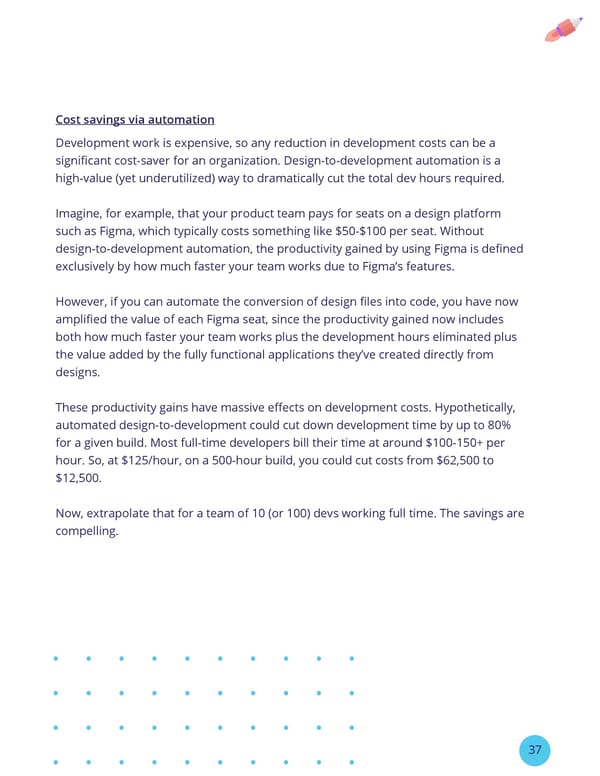Cost savings via automation Development work is expensive, so any reduction in development costs can be a significant cost-saver for an organization. Design-to-development automation is a high-value (yet underutilized) way to dramatically cut the total dev hours required. Imagine, for example, that your product team pays for seats on a design platform such as Figma, which typically costs something like $50-$100 per seat. Without design-to-development automation, the productivity gained by using Figma is defined exclusively by how much faster your team works due to Figma’s features. However, if you can automate the conversion of design files into code, you have now amplified the value of each Figma seat, since the productivity gained now includes both how much faster your team works plus the development hours eliminated plus the value added by the fully functional applications they’ve created directly from designs. These productivity gains have massive effects on development costs. Hypothetically, automated design-to-development could cut down development time by up to 80% for a given build. Most full-time developers bill their time at around $100-150+ per hour. So, at $125/hour, on a 500-hour build, you could cut costs from $62,500 to $12,500. Now, extrapolate that for a team of 10 (or 100) devs working full time. The savings are compelling. 37
 The Non-Technical Founder's Guide to Building an App | CrowdBotics Page 36 Page 38
The Non-Technical Founder's Guide to Building an App | CrowdBotics Page 36 Page 38